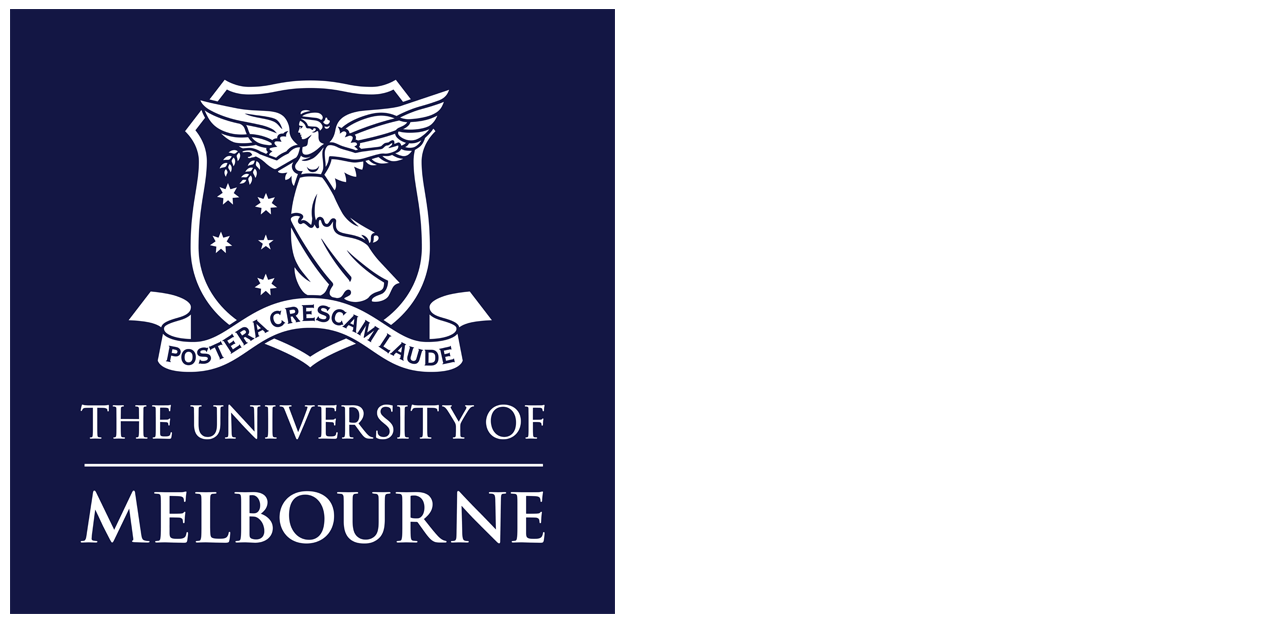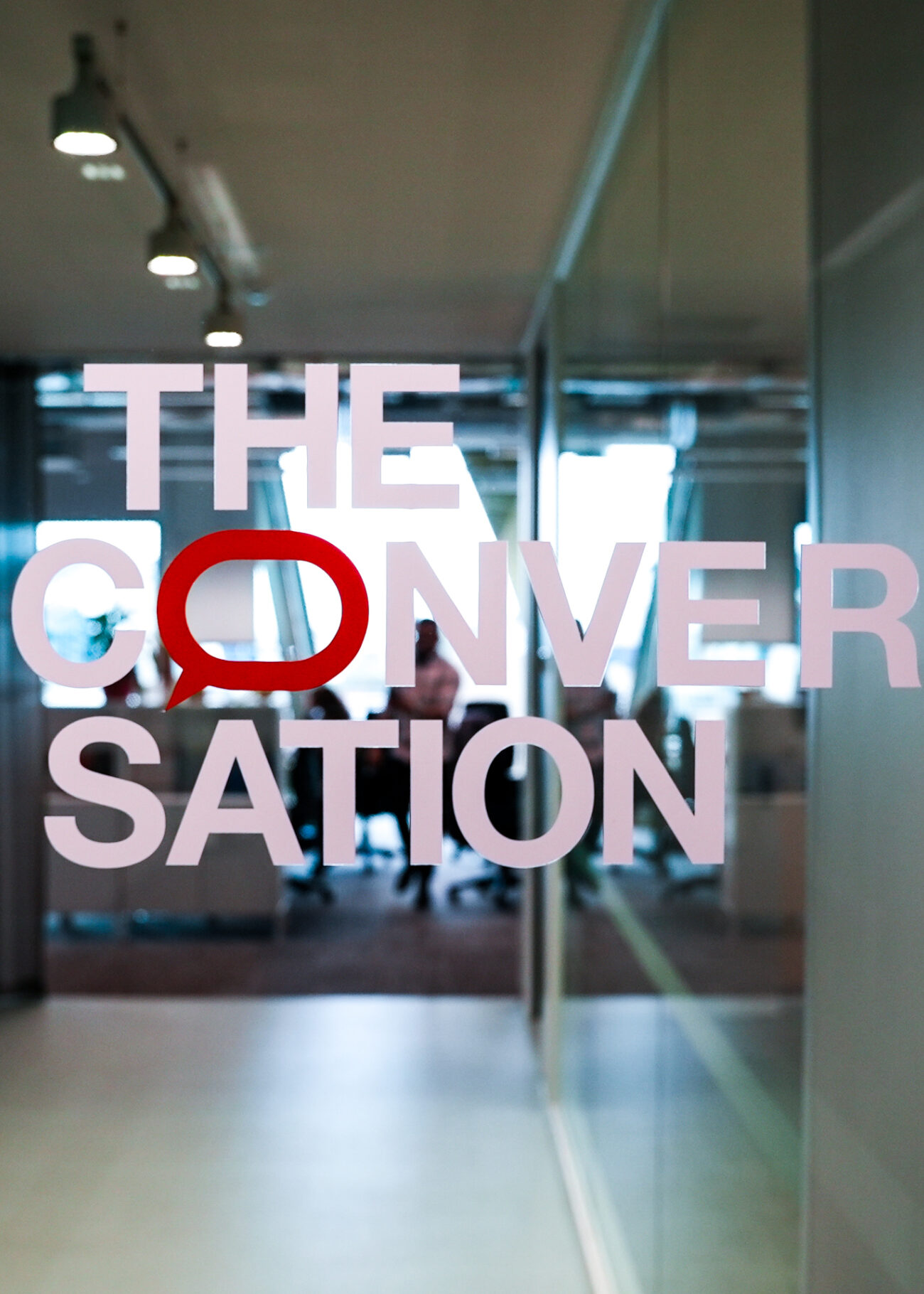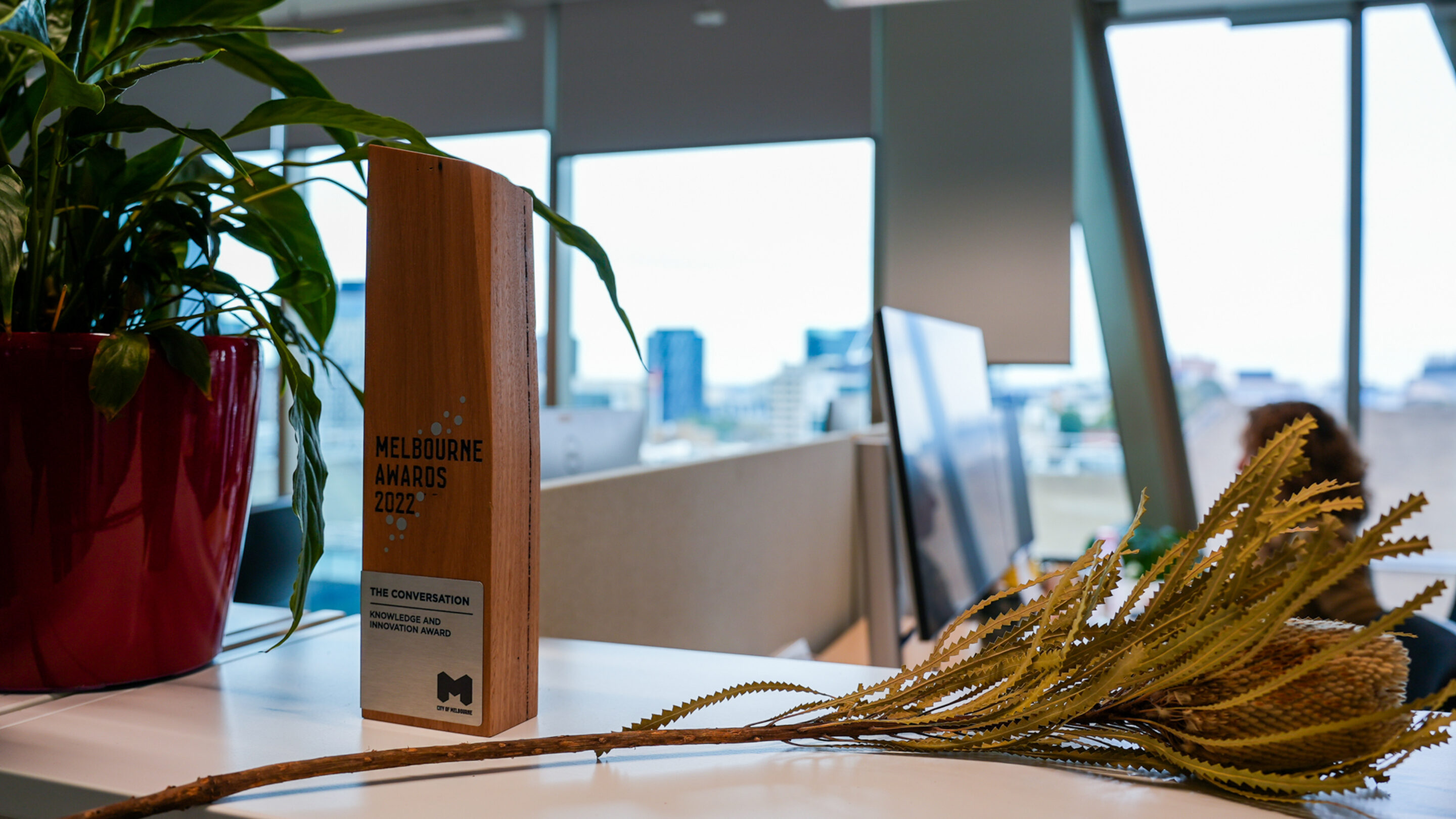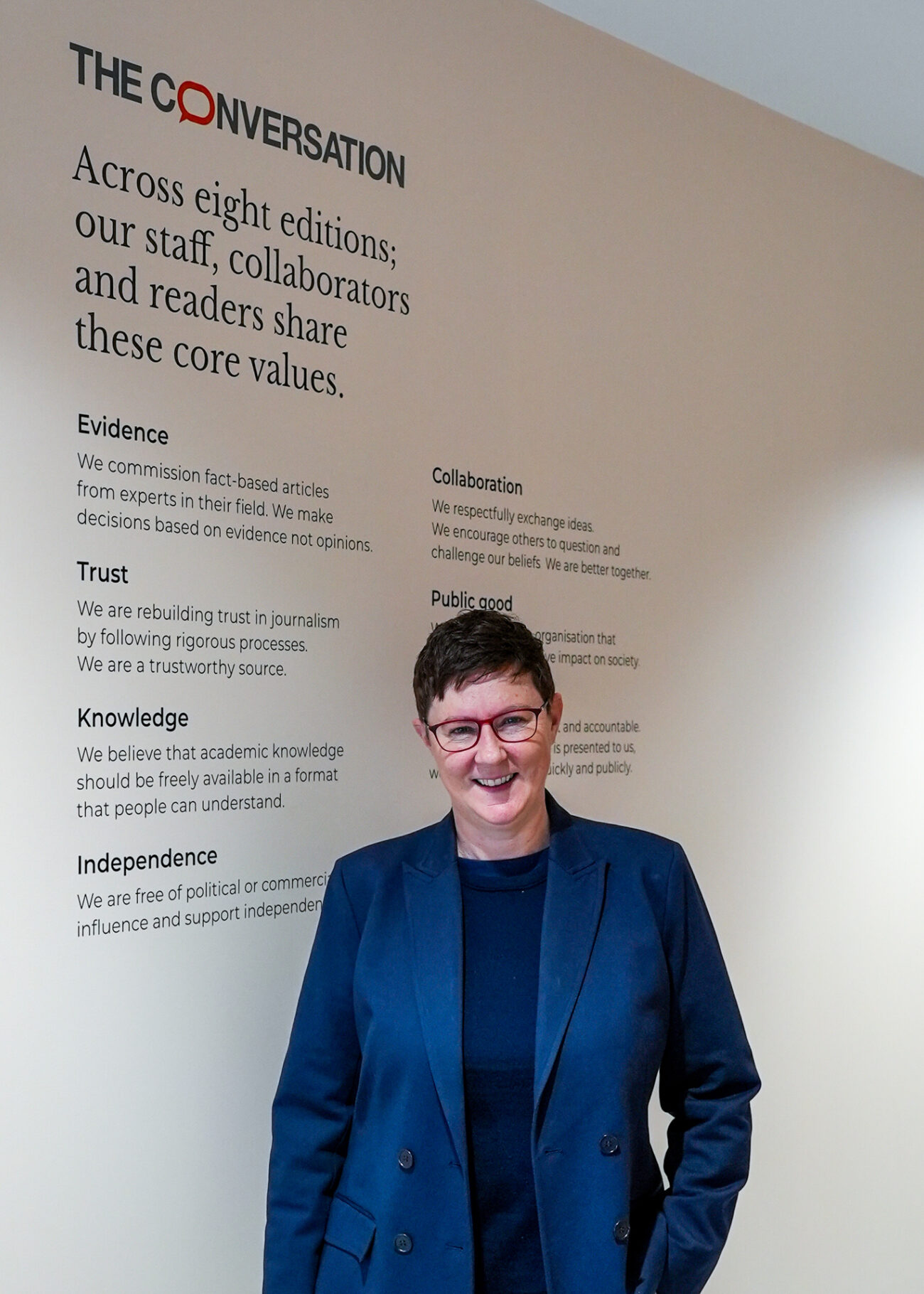

With decades of experience under her belt with some of Australia's largest media groups, Lisa Watts is a veteran of the media industry.
In her role as CEO at The Conversation, Lisa is embracing the challenges that come with running a media organisation in an increasingly connected and digital world, and with big names in the media industry such as Vice and Buzzfeed News closing up shop in recent years, it's clear that these challenges are vast and ever-increasing. Lisa, however, views AI and the march toward a digital future as an opportunity for true journalistic integrity to stand out from the crowd.
We sat down with Lisa to learn more about what it's like to bridge the divide between academia and editorial and find out why Melbourne Connect is the perfect home for The Conversation.

To start, can you please tell us what your current role is here at Melbourne Connect?
I'm the Chief Executive of The Conversation Media Group, an online news publishing website that works in collaboration with academics all over the world. We have around 500 university members that we work with to create content, and we have a big global audience reading our content every day.
The team at Melbourne Connect and in our other global offices all work on one central website that was created here in Melbourne, and powered by technology that we operate and manage.
Can you please tell us about your background and the roles you had prior to your work at The Conversation?
I was working for what was then Fairfax, now Nine, as an executive looking after one of their classifieds businesses. One of the things I used to do was due diligence for online start-ups within jobs, cars, houses or classifieds who were interested in selling their businesses to Fairfax to get an exit of some sort. I would get many pitches from people and got a good sense of what startups in that space were working on and what was really innovative.
I met one of the co-founders of The Conversation just before it launched because a contact put us in touch to discuss monetisation, potential revenue streams and how The Conversation site could generate income to support itself. Once we got talking, I was blown away by the simplicity of the idea. Hiring highly skilled journalists who work as editors and pairing them up with academics and researchers, and together they write articles that explain current events or new research which we then put out into the public domain through a big pipeline of publicly available free information.
How long have you been with The Conversation?
It has been almost 12 years since I started with The Conversation, because that’s how long we have been around. Our UK team launched two years after Australia and they have just celebrated their tenth anniversary. There are quite a few of us who have been with the team since its inception, so much has changed and evolved. It's quite a different beast now.
When we began, we were subleasing an office space from The University of Melbourne, so this is exactly where it all started. The two co-founders worked on the project at the University before it expanded out to the full media organisation that it is today.
Why is Melbourne Connect the right place for The Conversation to be based?
We love being based at Melbourne Connect. We’ll never get tired of it! It’s right for us due to a great mix of researchers and interesting companies, small and large. We also love having the ability to host events here.
As a public-facing brand, millions of people in Australia read The Conversation every month. It’s great for us to be able to have a donor lunch in the beautiful boardroom on the Superfloor or get access to some of the spaces around the precinct and invite people in to meet our editors or do a roundtable.

How does being located within the University ecosystem help with the work that The Conversation does?
We work with every university, but being on campus at The University of Melbourne makes it easy. Being in close proximity to the University allows us to have more face-to-face onsite meetings with our collaborators. I think many academics from the University love to come over to Melbourne Connect as well. It feels like a very exciting time for the University and there’s a constant flow of people coming and going. The creativity and innovation in the precinct is incredible.
What is the most challenging aspect of running a media organisation that requires input from both academics, who are specialists in their fields, and editors, who tend to have a broader perspective on what the general public is consuming in the news cycle?
Well, one of the great things The Conversation does is work with every university in Australia and New Zealand. Last year alone, our editors collaborated with over 4000 individual academics. Most researchers will only write once, for example they might have a specific bit of research on a malaria breakthrough and there is a mosquito outbreak, and they'll be called upon at that exact moment because they're the right person with the right expertise. Others may write more often. One challenge we have is we receive many more pitches from academics than we are able to publish — if funding increases and we expand the editorial team we can overcome that.
The role of the editors is to simplify research down to digestible content for our readers. Some academics are fantastic communicators and amazing writers, and others have all this incredible knowledge but they get great value from working with an editor who can help them get to the core of the idea to simplify some of the messages.
We also have some software that we've built that has features like a readability index that operates on a traffic light system. The lights go green when there's a readability index score that's reached, and it measures sentence length and complexity of the words. We help researchers to write in plain English and we have set that readability index to age 16, so more people can engage in any article that we publish.

You have worked in the media landscape for a long time. What inspires you to continue to turn up each day and do the work that you do?
We're lucky to be able to keep The Conversation going because the media landscape is tough. BuzzFeed News and Vice, who both have closed up shop recently, prove that the business model for media continues to be very challenging. Unless you're doing something very unique that people can’t get elsewhere or you have a wealthy proprietor to support the organisation, I think it's very difficult for most media organisations.
The Conversation is a non-profit, so it's for the public good. It's not there to make anyone wealthy. It doesn't have to make a profit for shareholders. The revenue we generate and tax deductible donations we get from readers all goes back into the editorial and technical team to support their work with researchers. We're able to do things that for-profit media can’t, like give away all the articles for free to other media to republish. We are able to tap into underserved audiences, translating the content that we've created to make it more digestible for different audiences on social media platforms.
It is a very motivating team environment for journalists. For people who work at The Conversation it is a passion and a calling — we get up every day wanting to understand and communicate and explain the world around us. Our Editor, Misha Ketchell, and his team are ambitious and want to win at journalism, so there's a high level of excitement and engagement, and all our editorial staff have a real passion for the work that they do.
What do you see as the most pressing challenges facing media organisations over the next five years?
I think the next five years will be very interesting. Generative AI is going to be a game changer and will transform our world in ways we probably don't quite understand yet. I can see people writing about Chat GTP and generative AI and it starts off with people thinking, this is incredible, and then it gradually moves to people thinking that maybe it’s all overblown, over valued hype, but in the midst of all that, our lives will change, particularly when it comes to people seeking out information.
That's essentially what The Conversation is there to do, to inject quality information into the media ecosystem, not just on current events, but on health, education, science, arts, climate and much more.
Google are developing their own generative AI tools that may not require people to click through to source material. A chatbot based on trained generative data will be able to present you with the answer, and it's going to be crucial for those machines to have access to the correct information on the internet to learn from. If machines learn from inaccurate sources then we're all in a lot of trouble. For us at The Conversation, building a direct brand connection with readers so they know us as a trustworthy source is very important. We will offer human-verified news. AI and news will be one of the biggest challenges and opportunities over the next five years.

How have you seen Melbourne Connect foster further collaboration between academics and the work that The Conversation does?
In terms of being able to have face-to-face interactions, being at Melbourne Connect is really powerful. For example, we launched a new section last year called Books and Ideas where we're working with hundreds of academics whose focus is on poetry, literature and big ideas in writing. These academics are sometimes reviewing other academic work or works of fiction and unlocking new audiences as a result of the work. To be able to be here at Melbourne Connect, and be able to invite those people into the community of this precinct, it’s brilliant.
There’s also the serendipity of running into people. For instance, ANZOG is based in the building, and they are a member of The Conversation as a publicly funded research organisation, so we’re always running into their key people at Melbourne Connect. There are unexpected upsides when you have those sorts of encounters.
What's your favorite part about Melbourne Connect?
In terms of the physical space, I love the large and quiet boardroom. We enjoy having our board meetings there — it really feels like we've arrived!
I love the Oculus (Womin-Djerring) too. We often have team lunches in the Oculus. 10 or 15 of us will get sandwiches from across the road and gather around there. That's a good way to bump into lots of people as well.
Our son also went to FROEBEL Early Learning Centre here, so it was sweet to know that he was just over the other side of the precinct while my wife and I were at work.
Thanks very much for your time, Lisa, it’s been great speaking with you and we look forward to running into you on the Superfloor.